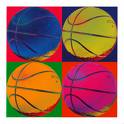Heart Health
/ I just want to say something simple about the heart. The heart needs enough space to operate.
I just want to say something simple about the heart. The heart needs enough space to operate.If the heart is competing for space with the lungs, it’s going to have problems.
Fortunately this rarely happens because the lungs can expand downward with the movement of the diaphragm muscle. The diaphragm moves with the expansion of the belly, the expansion of the lower back, and the expansion of the diaphragm-like structure on the floor of the pelvis. If the gates of the legs are open the experience of breathing will continue down into the feet.
Likewise if the lower back expands, the upper back will follow it, expanding the ribs out to the sides and, if the gates of the arms are open, the experience of breathing will continue out into the arms from the back. It will also travel up the back of the neck over the top of the head.
This is a simple description of health. It is an anatomical description of what is called “pre-natal breathing.” It is probably what happens during sleep, and during rejuvenate rest. It is also a common base practice for most types of qigong. It is a description of the dynamic structural alignment which gives the heart the largest possible space to live in. [It is not a description of neidan (elixir) practice. It is not a power gathering method. It is not some cosmic sexual orbit.]
 Constricted Belly & Lower Back
Constricted Belly & Lower BackThe rib cage can expand and condense quite a lot. If the abdominal muscles are constricted the expansion of the lower back and pelvic floor will be restricted too, and the gates to the legs will surely be closed during activity. The body easily makes up for this by lifting the front of the rib cage. This works fine, it will create plenty of space for the heart and lungs to operate optimally. However, it will create some compression between the shoulder blades where the ribs insert into the spine.
The rib cage is structured such that the largest expansion happens by lifting the ribs out to the sides, expanding under the armpits, which also expands the upper back. The full expansion of the rib cage creates some expansion in the chest as well but not lifting.
Exercises which tighten the abdominal muscles, or the space between the shoulder blades don’t seem to cause any short term problems. However, over the long term if other factors like stiffness in the chest, spine degeneration, or pour circulation appear--these sorts of exercises will simply give the heart less room. And that is a serious problem.
The space between the shoulder blades should be loose and lively. Feel the skin between a cat’s shoulder blades and you’ll see what I mean. The area behind the heart should be loose-- tiger skin loose.
Update: I've been looking around google images for a normal CT scan of the abdomin and you wouldn't believe how many images of really messed up people they have up there. Yikes.






